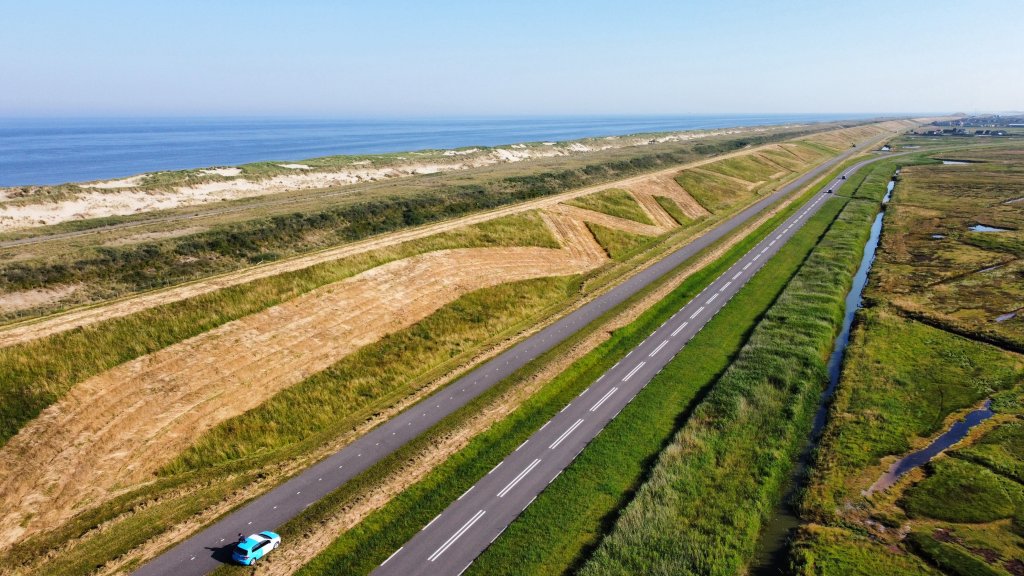Ecological management
To give nature a helping hand, we are seeding some dikes with a native flower and herb mixture that suits the North Holland dikes. With this we create flower-rich dikes. They form a seed source for further distribution. A species-rich turf with flowers, in addition to having a greater food supply for insects, also has a more varied root structure, which contributes to erosion resistance. This makes the dike more resistant to prolonged drought. A flower-rich dike is a safe dike!
Sinus mowing or strip mowing
Sinus management is insect-friendly management on the dike that forms a ribbon across the agricultural landscape. It is a 'winding way of mowing' in which we mow mainly the rough parts in the first round of mowing (from mid-June). How and what we mow depends on the vegetation development at the location. Sometimes we also mow in strips and leave half of the vegetation. And in the second round of mowing (mid-August), we mow the other half, so that the transition of both mowings takes place organically. This creates varied vegetation.
We carry out this type of mowing with our own maintenance service. We apply ecological mowing to the Assendelverzeedijk and the Hondsbossche Zeewering, the Kolhornerkade along Kolhornervaart, the Mijzenpolder, the Westerzeedijk, the IJsselmeerdijk and in the Bergermeer. These are dikes that no longer have a water-retaining function or dikes on storage basin waters, allowing us to experiment.
